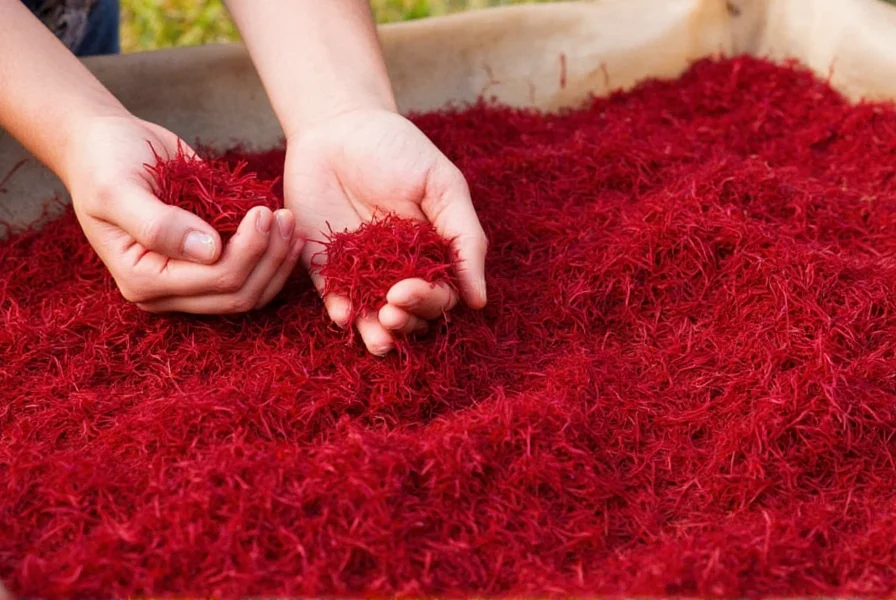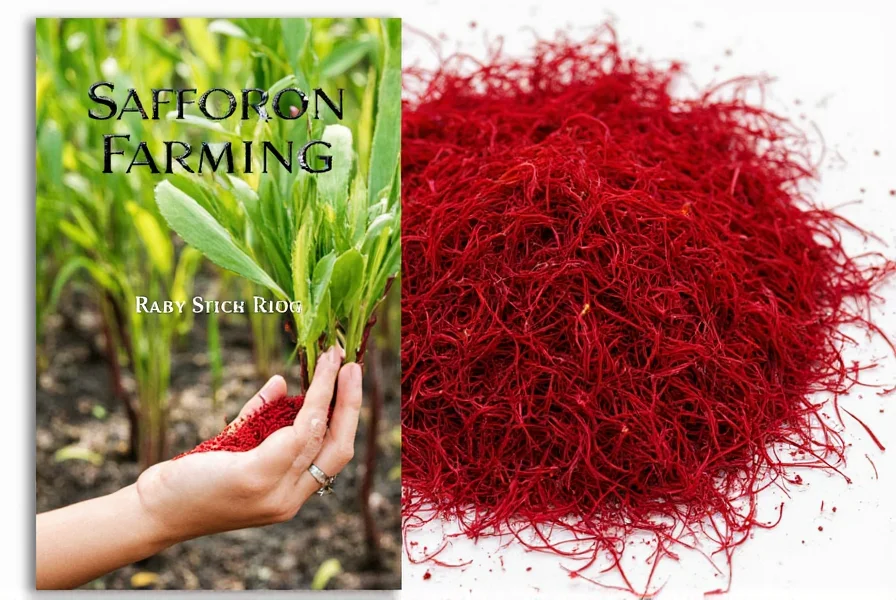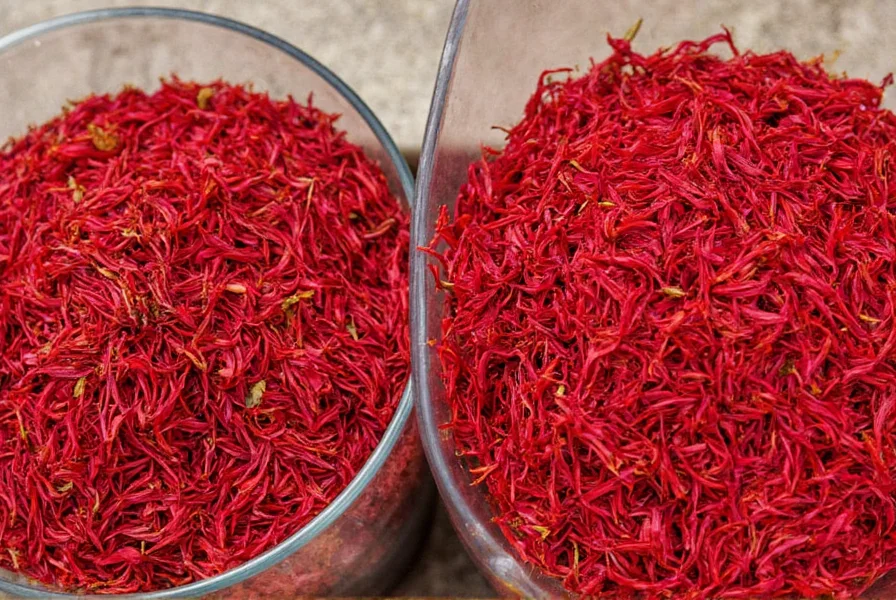Saffron farming represents one of agriculture's most fascinating and economically significant specialized crops. The process centers around cultivating Crocus sativus, a sterile autumn-flowering crocus whose three red stigmas yield the prized saffron threads. Unlike most crops, saffron's value comes not from bulk production but from meticulous hand labor—each flower produces only three stigmas, and it takes roughly 150,000 flowers to produce a single kilogram of dried saffron. This extraordinary labor requirement explains why saffron commands prices between $3,000-$15,000 per kilogram, making it more valuable by weight than gold.
The Saffron Plant: Understanding Crocus sativus
The saffron crocus differs significantly from other crocus varieties. As a triploid plant, Crocus sativus cannot reproduce sexually and must be propagated through corm division. Each corm produces one to three flowers during a brief two-to-three week blooming period in autumn. The flowers open at dawn and must be harvested the same day, as they wither quickly in the sun. This time-sensitive nature of saffron farming creates the first major challenge for growers: coordinating sufficient labor for the short harvest window.

Essential Climate and Soil Requirements for Saffron Farming
Successful saffron farming depends on specific environmental conditions that mimic its native Mediterranean and Central Asian habitats. The ideal saffron farming climate features:
| Factor | Optimal Range | Notes |
|---|---|---|
| Temperature | 15-25°C (59-77°F) during growth | Frost tolerant but extreme cold damages corms |
| Rainfall | 500-800 mm annually | Dry summer period essential for dormancy |
| Soil Type | Well-drained loam or sandy loam | pH 6-8; poor drainage causes corm rot |
| Sun Exposure | Full sun | Minimum 6 hours daily sunlight required |
Regions with hot, dry summers followed by cool, wet autumns provide the most suitable conditions for saffron farming. Iran currently dominates global production (accounting for over 90% of world supply), but successful saffron farming operations also exist in Spain, India (particularly Kashmir), Greece, and increasingly in unexpected locations like New Zealand and the United States where farmers carefully replicate ideal microclimates.
Step-by-Step Saffron Farming Process
Understanding the complete saffron farming cycle helps growers maximize yield and quality:
1. Corm Selection and Planting (July-August)
High-quality corms (bulb-like structures) measuring 6-8 cm in diameter produce the best yields. Planting occurs in late summer at depths of 15-20 cm, with spacing of 10-15 cm between corms. Proper saffron farming technique requires planting on raised beds in well-prepared soil to ensure drainage. Each hectare requires approximately 3-5 tons of corms for initial planting.
2. Growth and Flowering (October-November)
After summer dormancy, autumn rains trigger growth. Flowers emerge 6-8 weeks after planting and bloom for just 2-3 weeks. The timing of saffron farming operations becomes critical during this phase, as flowers must be harvested at first light when fully open but before the heat of day causes them to wilt.
3. Harvesting and Processing (Daily during bloom)
This labor-intensive phase defines saffron farming economics. Workers hand-pick flowers each morning, then carefully separate the three red stigmas from each bloom. The delicate stigmas undergo immediate drying—traditionally over charcoal fires but increasingly using controlled electric dehydrators—to reduce moisture content from 80% to 10-12%. Proper saffron farming techniques preserve the stigmas' crocin (color), picrocrocin (taste), and safranal (aroma) compounds during this critical processing stage.

Yield Expectations and Economic Viability
Understanding realistic production metrics is essential for profitable saffron farming:
- First-year yield: 0.5-1 kg per acre (establishment year)
- Full production: 3-12 kg per acre annually after 3-4 years
- Labor requirement: 300-400 hours per acre during harvest season
- Corm multiplication: 5-10x annual increase, allowing farm expansion
While saffron farming offers exceptional value per unit area compared to other crops, the high labor costs and establishment period (3-4 years to reach full production) create significant barriers to entry. Successful commercial saffron farming operations typically start small (0.5-2 acres) and expand as corms multiply and growers refine their techniques. The most profitable saffron farming enterprises focus on premium quality through careful harvesting and processing rather than maximizing quantity.
Common Challenges in Saffron Farming
Growers face several obstacles when implementing saffron farming techniques:
Pest and Disease Management
Corm rot (from poor drainage), violet root rot, and saffron nematodes threaten saffron farming operations. Organic saffron farming approaches emphasize crop rotation, proper drainage, and resistant corm varieties rather than chemical treatments that could compromise the delicate spice's quality.
Labor Coordination
The narrow harvest window creates the most significant challenge in saffron farming. Operations must recruit and train sufficient workers who can identify optimal harvest timing and handle flowers gently. Many successful saffron farming businesses develop relationships with local communities to ensure reliable labor during the critical two-to-three week harvest period.
Quality Control
Maintaining consistent quality separates profitable saffron farming operations from marginal ones. Factors affecting quality include:
- Harvest timing (flowers picked too early or late yield inferior stigmas)
- Drying temperature (excessive heat destroys volatile compounds)
- Storage conditions (light and moisture degrade quality)
- Processing speed (delayed processing causes browning)
Sustainable Saffron Farming Practices
Modern saffron farming increasingly incorporates sustainable techniques that enhance long-term viability:
- Water conservation: Drip irrigation systems reduce water usage by 30-50% compared to traditional methods
- Soil health: Organic matter amendments improve corm development and disease resistance
- Integrated pest management: Natural predators and resistant varieties minimize chemical inputs
- Renewable energy: Solar-powered drying systems maintain consistent processing temperatures
These sustainable saffron farming approaches not only protect the environment but also appeal to premium markets willing to pay more for ethically produced saffron. Growers who document their sustainable practices often access higher-value markets and build stronger customer relationships.
Global Saffron Farming Techniques Compared
Different regions have developed specialized saffron farming methods adapted to local conditions:
- Iranian method: Traditional field cultivation with emphasis on high corm density (up to 5 tons/ha)
- Spanish technique: Focus on quality over quantity with lower planting density and meticulous processing
- Kashmiri approach: High-altitude cultivation with unique microclimate advantages
- New farming frontiers: Hydroponic and greenhouse methods expanding saffron farming to non-traditional regions
Aspiring saffron farmers should research these different saffron farming techniques to determine which approaches best suit their local conditions and market goals. The most successful operations often blend traditional knowledge with modern agricultural science.
Getting Started with Saffron Farming
For those considering saffron farming as a new agricultural venture, these steps provide a practical roadmap:
- Conduct a small trial plot (100-500 corms) to test local conditions
- Source high-quality corms from reputable suppliers
- Prepare soil with proper drainage and organic matter
- Develop a detailed harvest and processing plan
- Research market opportunities and pricing structures
- Start small and expand as corms multiply and skills develop
Successful saffron farming requires patience—the first harvest yields minimal returns, with profitability typically achieved in years three to five. However, the exceptional value per unit area makes saffron farming an increasingly attractive option for specialty crop producers willing to master this ancient but economically viable agricultural practice.
Frequently Asked Questions About Saffron Farming
How much saffron can one acre produce?
A mature saffron farm typically yields 3-12 kilograms per acre annually. First-year production is much lower (0.5-1 kg/acre), with yields increasing as corms multiply. The labor-intensive nature of hand harvesting limits maximum yields, but high market value (typically $3,000-$15,000 per kg) makes saffron farming economically viable despite modest production volumes.
What climate conditions are essential for successful saffron farming?
Saffron farming requires a Mediterranean-like climate with hot, dry summers (for corm dormancy) followed by cool, wet autumns (for flowering). Ideal temperatures range from 15-25°C (59-77°F) during growth, with well-drained soil and full sun exposure. While Iran produces most of the world's saffron, successful saffron farming operations exist in diverse regions including Spain, Kashmir, Greece, and increasingly in New Zealand and parts of the United States where microclimates mimic these conditions.
Why is saffron farming so labor-intensive?
Saffron farming requires extensive manual labor because each flower produces only three stigmas that must be hand-picked at precise maturity. Approximately 75,000-150,000 flowers yield just one pound of saffron, with harvesting occurring during a narrow 2-3 week autumn window. The delicate stigmas then require careful separation and immediate drying to preserve quality. This labor intensity (300-400 hours per acre during harvest) explains saffron's exceptionally high market value.
How long does it take to establish a profitable saffron farming operation?
Most saffron farming operations require 3-5 years to become profitable. The first year produces minimal yield (0.5-1 kg/acre) as corms establish themselves. Yields increase annually as corms multiply (5-10x per year), with full production typically reached in year 3-4. The high initial investment in quality corms and infrastructure, combined with the labor-intensive harvest process, means growers must carefully manage expectations during the establishment phase of saffron farming.
Can saffron be grown outside traditional regions?
Yes, modern saffron farming techniques allow cultivation outside traditional regions. Successful operations now exist in unexpected locations like New Zealand, Canada, and the United States through careful microclimate management. Key adaptations include raised beds for drainage, greenhouse cultivation for temperature control, and precise irrigation scheduling. While yields may be lower than in ideal regions, the high value of saffron makes even modest production economically viable in non-traditional growing areas.











 浙公网安备
33010002000092号
浙公网安备
33010002000092号 浙B2-20120091-4
浙B2-20120091-4